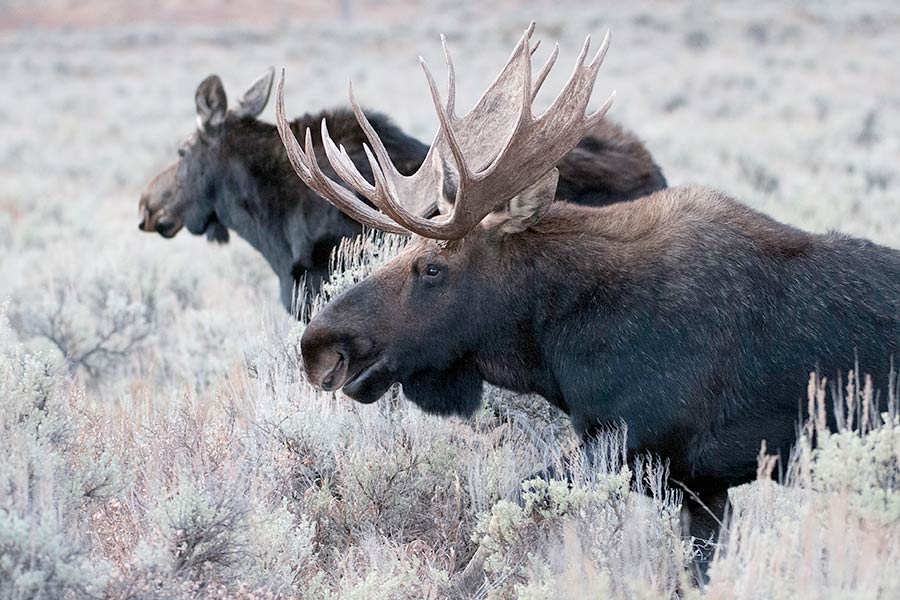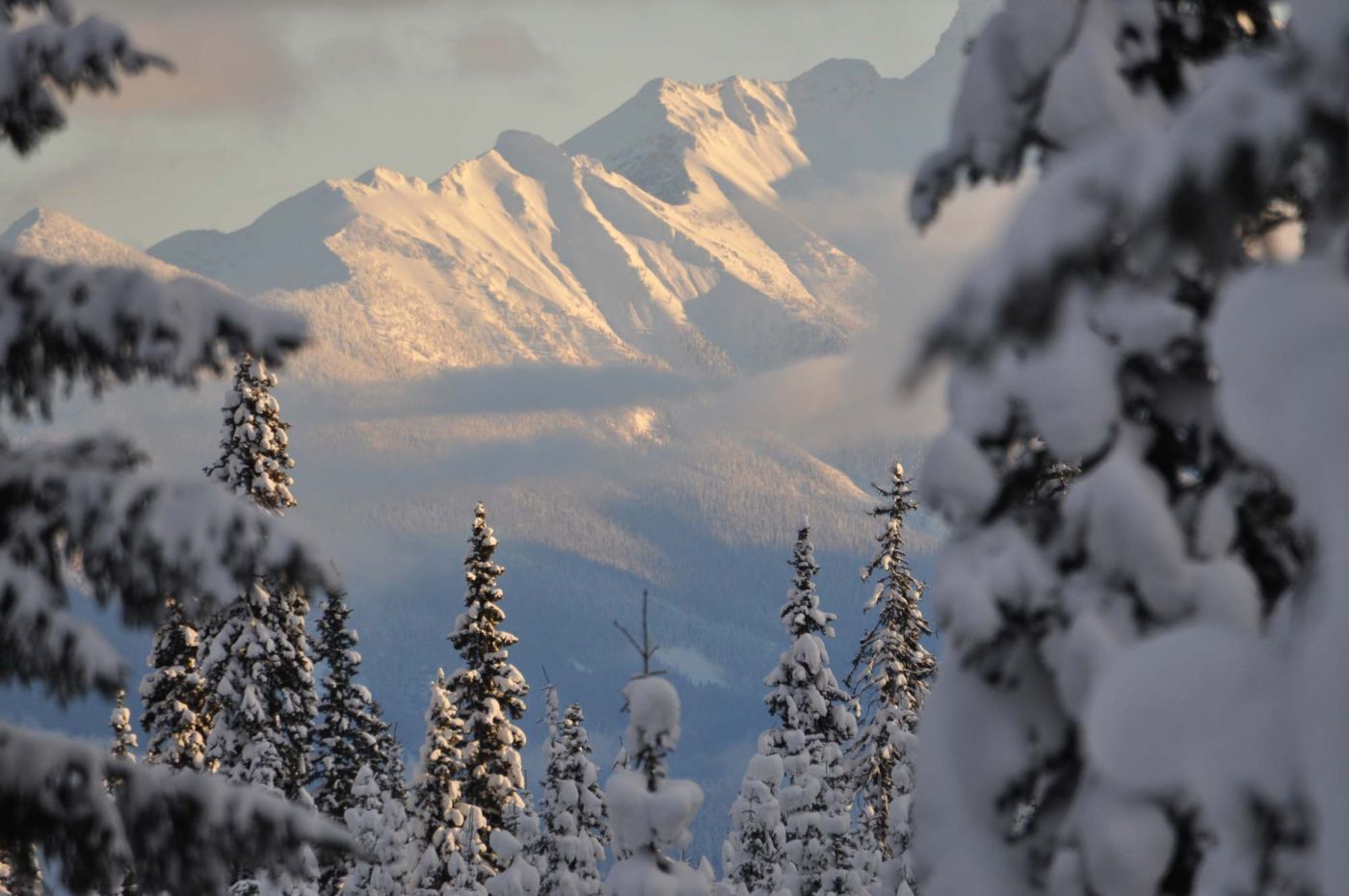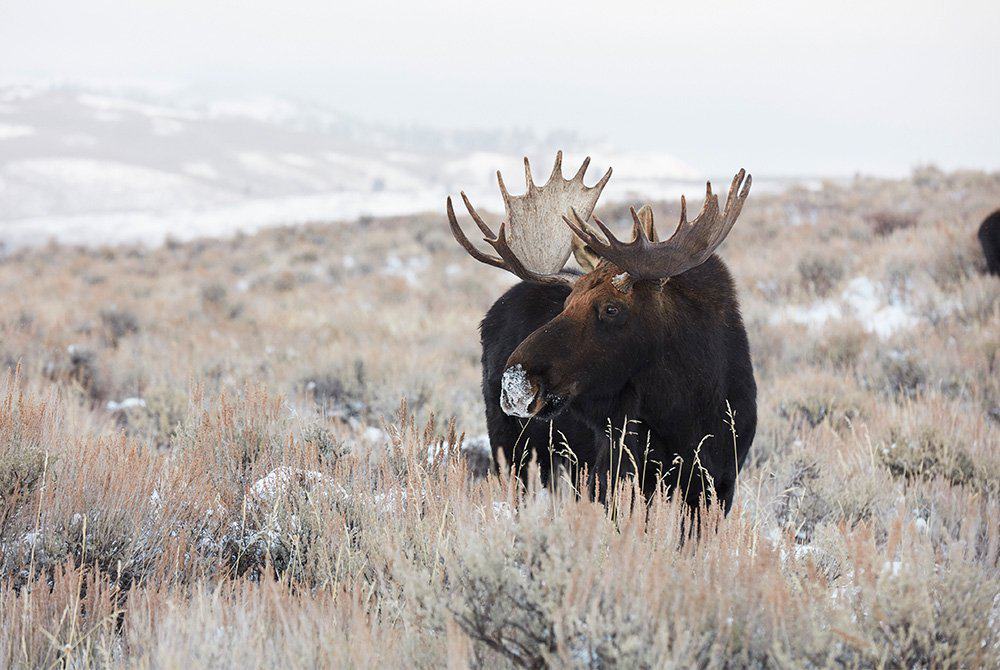To find moose, head to forests, parks, and wetlands in North America and Scandinavia. Moose prefer these habitats.
Moose are majestic creatures that captivate the imagination with their sheer size and grace. Whether you are an avid wildlife enthusiast or simply hoping to catch a glimpse of these magnificent animals in their natural habitat, finding moose can be an exciting and rewarding adventure.
From the towering forests of Canada and the United States to the pristine wilderness of Sweden and Norway, moose can be spotted in various locations around the world. Understanding their behavior and preferred ecosystems can increase your chances of encountering these elusive creatures. Join us as we explore the enchanting world of moose and discover where you can find them in the wild.

Credit: wildlife.utah.gov
Moose Habitats
Forest Habitats
Forests are the primary home for moose due to the abundant food supply and shelter they provide.
Wetland Habitats
Wetlands are another favored destination for moose, offering water sources and diverse vegetation for grazing.
Moose Behavior
Moose are typically found in boreal and mixed deciduous forests near water sources like lakes and marshes. They are also commonly seen in mountainous regions with dense vegetation, as they prefer habitats with abundant foliage for feeding and cool climate for protection.
Moose, the largest member of the deer family, exhibit interesting behavior patterns in their natural habitats. Understanding their Feeding Habits and Social Interactions can provide valuable insights into these majestic creatures.Feeding Habits
Moose primarily feed on vegetation, including aquatic plants, twigs, and shrubs. They require a high volume of food each day to sustain their large bodies.Social Interactions
Moose are known to be solitary animals, but during the mating season, they engage in social gatherings. Communication among moose involves vocalizations, body postures, and scent markings. In summary, moose demonstrate unique behaviors related to their feeding habits and social interactions in the wild.Moose Watching Tips
Observing moose in their natural habitat can be an exhilarating experience, but it requires patience and strategic planning. Here are some moose watching tips to help you have the best chance of spotting these majestic creatures.
Choosing The Right Time
Moose are most active during the early morning and late evening hours, so plan your moose watching excursions for dawn or dusk. This is when they are more likely to be grazing or moving around, increasing your chances of spotting one. Avoid midday outings, as moose tend to rest and seek shelter from the sun during this time.
Best Locations
- Consider the Algonquin Provincial Park in Ontario for a prime moose-watching location, as it is known for its thriving moose population.
- In the United States, Maine and Alaska are popular destinations for moose watching due to their abundant moose populations and accessible wilderness areas.
- Look for wetland areas, such as marshes or lakeshores, which moose frequent for foraging and to cool off during warmer months.

Credit: www.ecotours-bc.com
Safety Precautions
When it comes to encountering moose in their natural habitat, it is essential to prioritize safety precautions to ensure a peaceful coexistence. Respecting their space and handling encounters appropriately are key factors when it comes to minimizing potential risks. Read on to discover how to navigate your moose encounters with confidence and respect.
Respecting Their Space
Respecting the personal boundaries of moose is crucial to avoid any confrontations or unnecessary disturbances. To ensure you maintain a safe distance and respect their need for space, follow these guidelines:
- Avoid approaching moose too closely, as they can perceive it as a threat.
- Admire them from a safe distance of at least 50 feet, allowing them to feel secure in their environment.
- Do not attempt to feed or pet them, as this can disrupt their natural behaviors and potentially lead to aggression.
- Refrain from making loud noises or sudden movements that may startle the moose.
Handling Encounters
In the event of a moose encounter, it’s important to remain calm and follow these guidelines to ensure both your safety and the moose’s:
- If you stumble upon a moose unexpectedly, maintain a safe distance and avoid any sudden or aggressive movements.
- Give the moose an opportunity to retreat by slowly backing away.
- If the moose displays signs of aggression, such as flattened ears, raised hackles, or stomping its feet, it’s a clear indication that you have intruded upon its personal space. In such cases, slowly and cautiously retreat.
- Avoid getting between a moose and its calf, as this can trigger protective behavior.
- If the moose charges, seek shelter behind a solid object like a tree or vehicle, and wait for the moose to move away.
By understanding and adhering to these safety precautions, you can enjoy the beauty of moose in their natural habitat without compromising your safety or intruding upon their space. Remember, a respectful and cautious approach is the key to harmonious coexistence.
Conservation Efforts
Explore the vast wilderness of North America for moose sightings and witness their majestic presence. Conservation efforts ensure the protection of their natural habitats, making it possible to encounter these iconic animals in their native environment.
Protecting Moose Habitats
Conservation efforts play a crucial role in safeguarding the habitats of moose. These majestic creatures rely on specific environments to thrive, and it is essential to protect these habitats to ensure their survival. When it comes to moose, their preferred habitats generally consist of moist areas with ample vegetation such as swamps, marshes, and lakeshores. These habitats provide them with plenty of food sources and cover from predators. Initiatives are underway to conserve and restore these habitats to provide suitable living conditions for the moose population. By protecting their critical habitats, we can contribute to the wellbeing of these incredible animals.Research And Education
In addition to habitat protection, research and education play a vital role in moose conservation efforts. Scientists and researchers conduct extensive studies to gather valuable information about moose behavior, population dynamics, health, and the impact of various factors on their survival. This research helps establish effective conservation strategies and identify potential threats that may affect moose populations. Furthermore, educational programs and initiatives are conducted to raise awareness among the general public and local communities about the importance of moose conservation. Through education, people can understand the significance of preserving moose habitats and adopt practices that contribute to their conservation.Conservation Efforts In Action
Conservation organizations and government agencies collaborate to implement practical actions that protect moose populations. Here are some significant conservation efforts that are being carried out:- Restoration projects: Restoration projects are focused on rehabilitating degraded habitats and ensuring they meet the necessary requirements for moose survival. These projects involve habitat restoration, reforestation, and invasive species control.
- Monitoring and management: Regular monitoring is essential to assess moose population trends, health, and the impact of human activities and natural factors. By closely monitoring moose populations, conservationists can make informed decisions regarding their management and take appropriate action when necessary.
- Conservation partnerships: Collaboration between conservation organizations, government agencies, and local communities is crucial. Through partnerships, resources can be pooled effectively, and conservation efforts can be coordinated to achieve positive outcomes for moose populations.

Credit: www.facebook.com
Frequently Asked Questions Of Where Can I Find Moose
Where Can I Find Moose In The Wild?
You can find moose in the wild in regions with dense forests, such as Alaska, parts of Canada, and Scandinavia. Look for areas with lakes, rivers, and marshlands, as moose are drawn to these water sources.
Can I See Moose In National Parks?
Yes, you can see moose in several national parks, such as Denali National Park in Alaska, Gros Morne National Park in Newfoundland, and Acadia National Park in Maine. These parks provide suitable habitats for moose, increasing your chances of spotting one.
Are There Any Specialized Moose Tours Or Safaris?
Yes, there are specialized moose tours and safaris available in certain regions. These tours are led by experienced guides who know the best areas to find moose. Consider booking a tour in Alaska, Maine, or Sweden to maximize your chances of seeing these majestic creatures.
What Is The Best Time Of Year To See Moose?
The best time to see moose is during the early spring and late summer months. In the spring, moose can often be seen near water sources as they search for food. In late summer, they become more active again after the heat of summer has passed.
Conclusion
Locating moose in the wild can be an exhilarating experience for nature enthusiasts. By exploring national parks, such as Yellowstone and Denali, or embarking on guided wildlife tours, it’s possible to encounter these majestic creatures in their natural habitat. With consideration to the animals’ safety and welfare, one can appreciate their impressive presence while observing from a respectful distance.
Happy moose watching!



